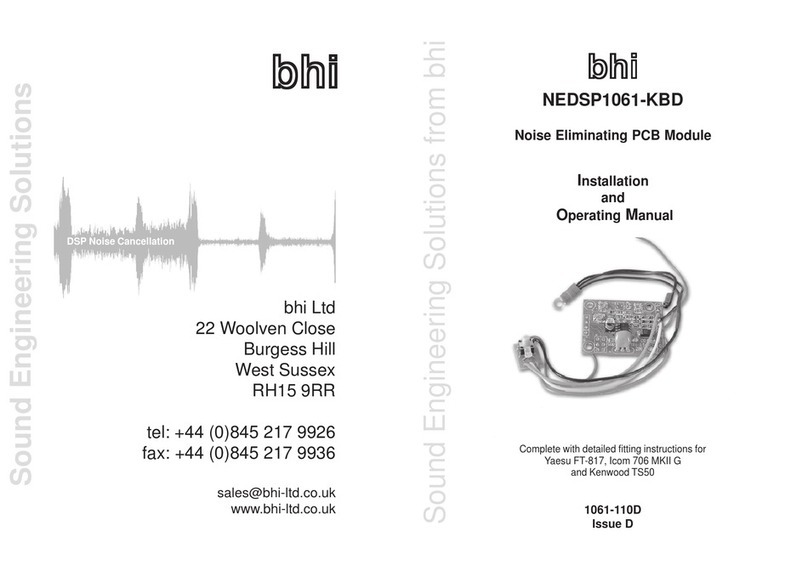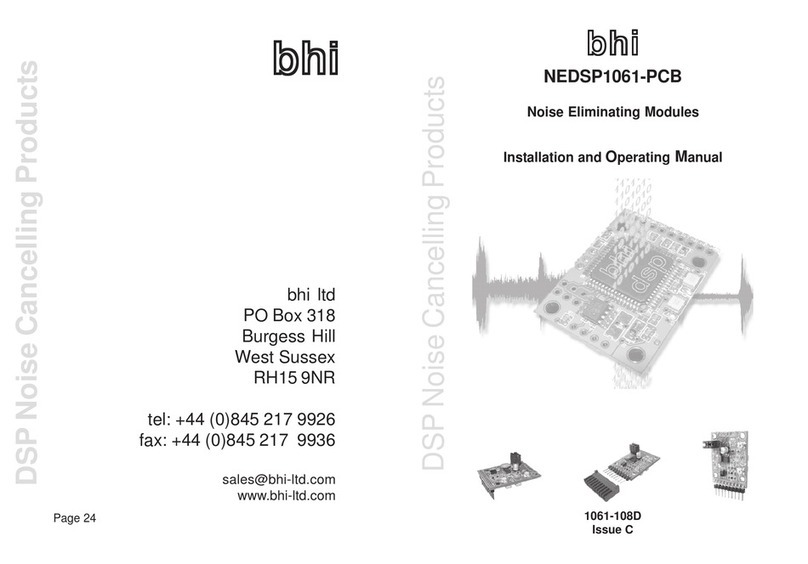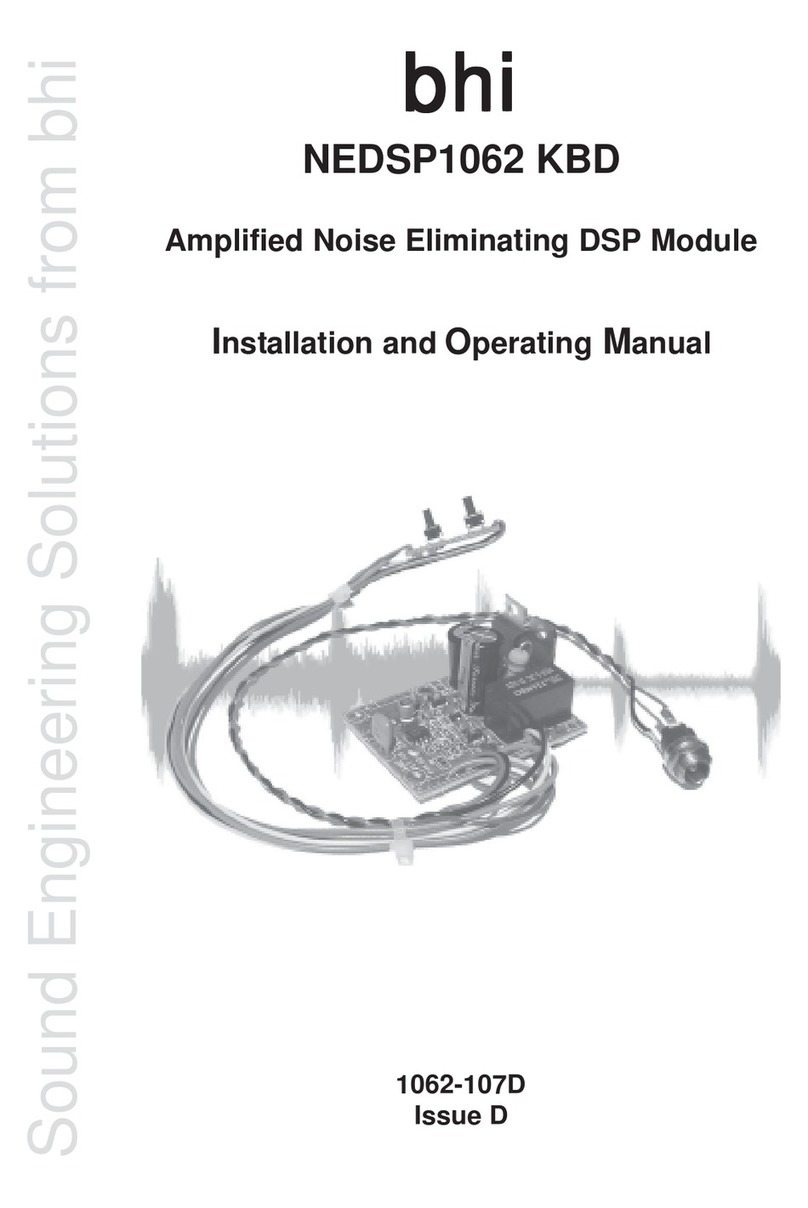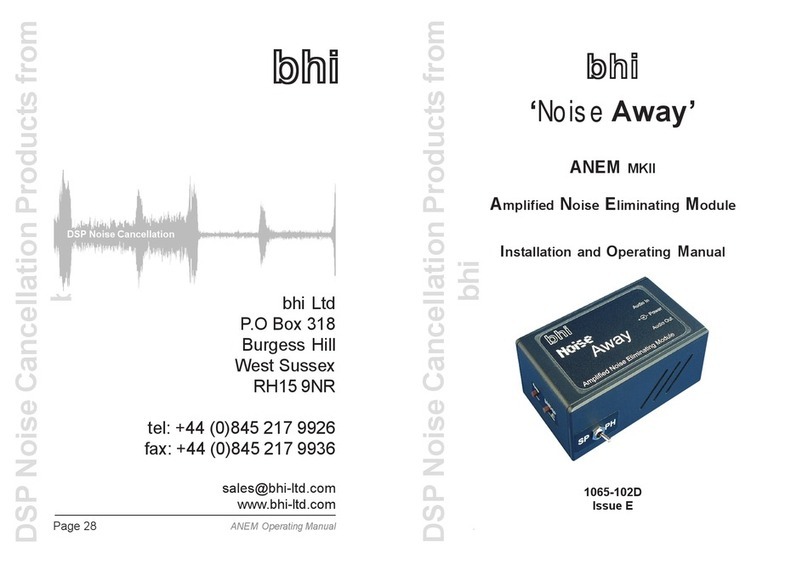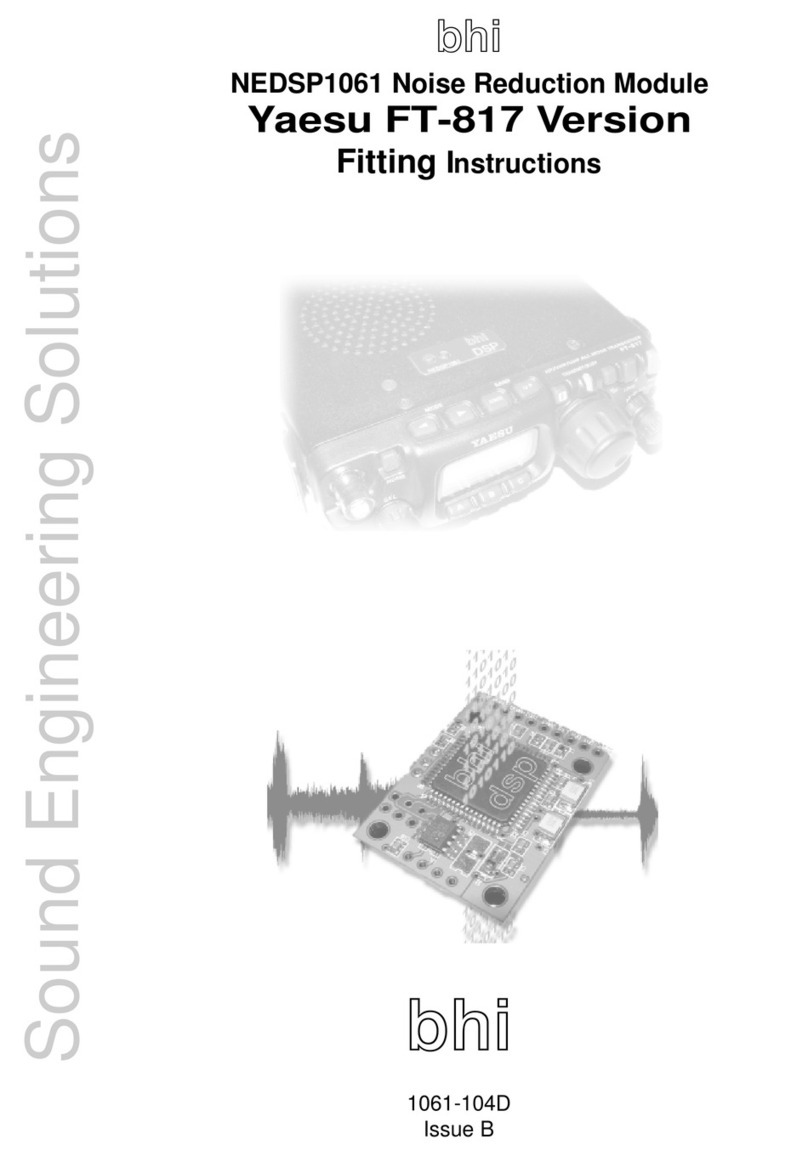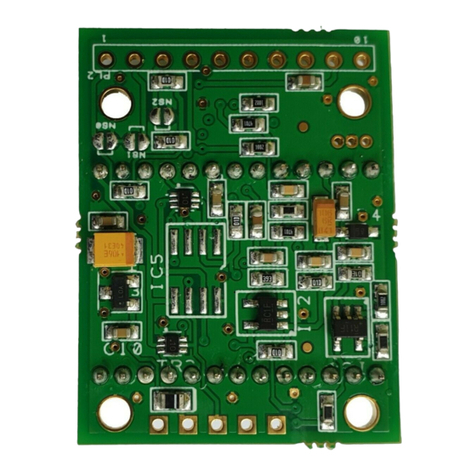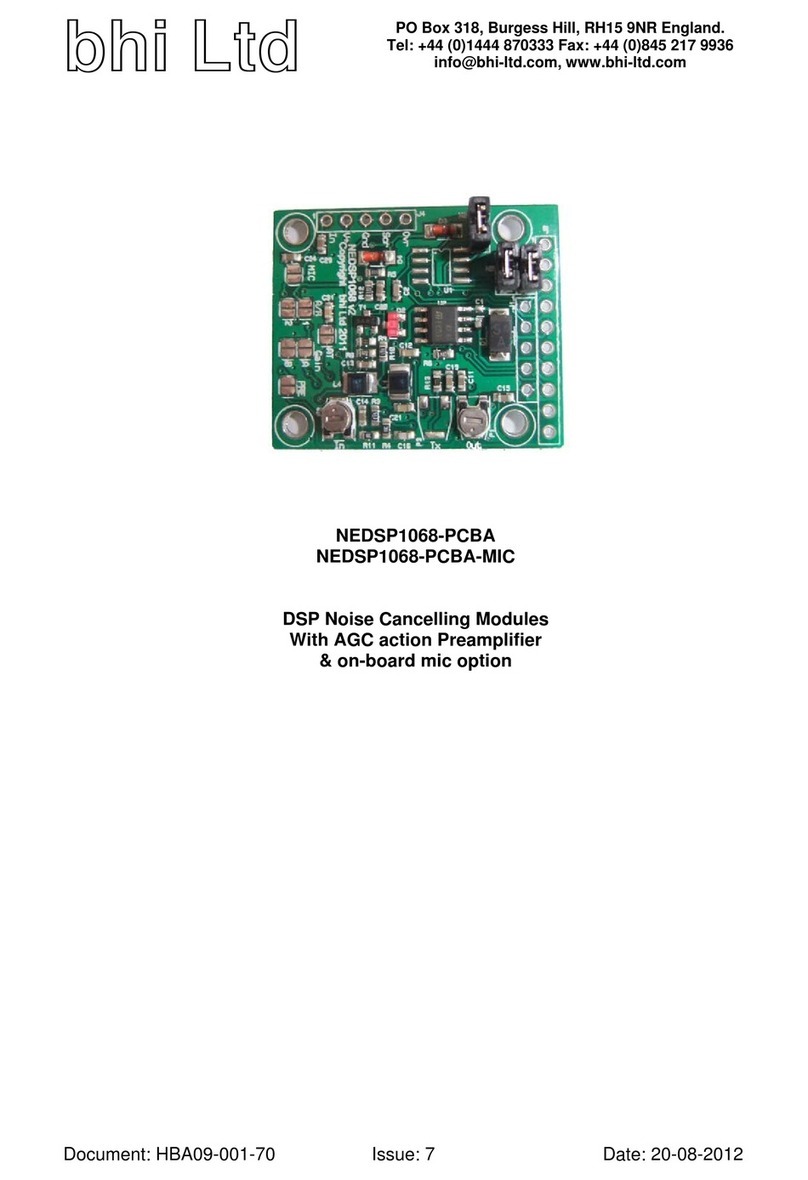Copyright & Disclaimer:
Copyright: This publication, including all photographs and illustrations is protected under
international copyright laws, with all rights reserved. Neither this manual, nor any of the material
within, may be copied or reproduced without the written consent of bhi Ltd.
Disclaimer: The information in this document is subject to change without notice. bhi Ltd. makes no
representations or warranties with respect to the contents hereof and specifically disclaims any
implied warranties of merchantability or fitness for any particular purpose. Furthermore, bhi Ltd.
reserves the right to revise this publication and to make changes from time to time in the content
hereof without obligation of bhi Ltd. to notify any person of such revision or changes.
1. Introduction –The NEDSP1901-PCB module is designed to take line level audio signals and
the NEDSP1901-PCB-MIC version is designed for use with various microphones. They are
separate products and need to be ordered separately, and they are not interchangeable,
although the NEDSP1901-PCB-MIC can also be used with line level audio signals.
Note: Go to page 12 for the specific NEDSP1901-PCB-MIC information
NEDSP1901-PCB Version:
The NEDSP1901-PCB module is an audio DSP noise cancelling module that is used to clean up noisy
speech signals to give improved speech clarity in noisy conditions. The 1901 module is pin for pin
replacement module for the discontinued NEDSP1061-PCB module. It operates with a similar
specification but incorporates the latest bhi DSP noise cancelling technology and maintains virtually
the same physical dimensions as the NEDSP1061-PCB.
DSP side of PCB Rear side of PCB
1.1 NEDSP 1901 Module Features:
•Fully adaptive to changing noise environments
•Input and output level controls
•Virtually no distortion to speech signals
•Up to 40 dB noise reduction in 8 selectable levels
•Audio bandwidth 300Hz to 5KHz
•Noise Reduction may be preset or remotely set during operation.
•7 to 18 Volt supply range
•Approximately 10 dB of signal gain with the ability to drive impedances of less than 1KOhm.
•Wide range of connection possibilities
•Mounting holes
